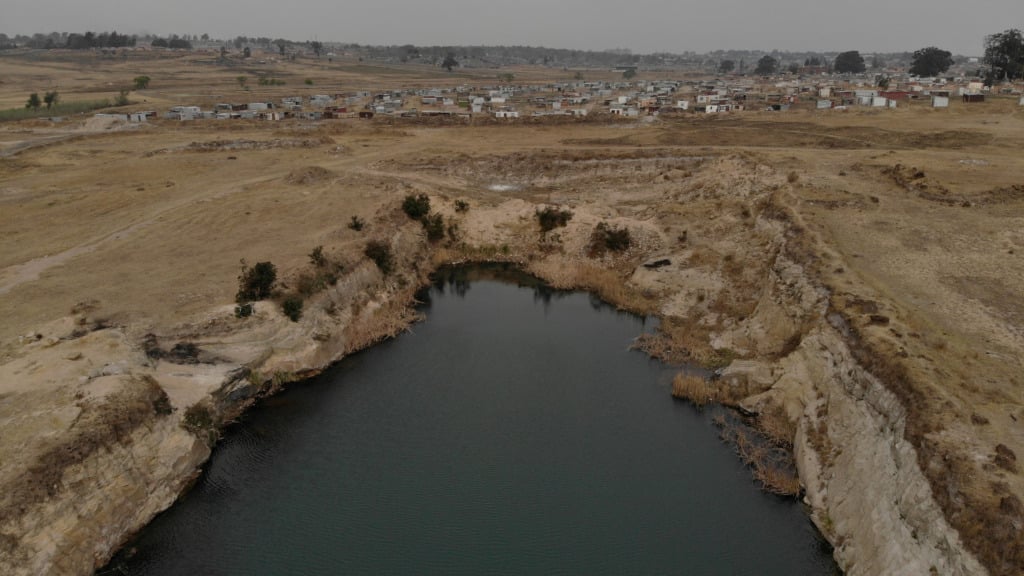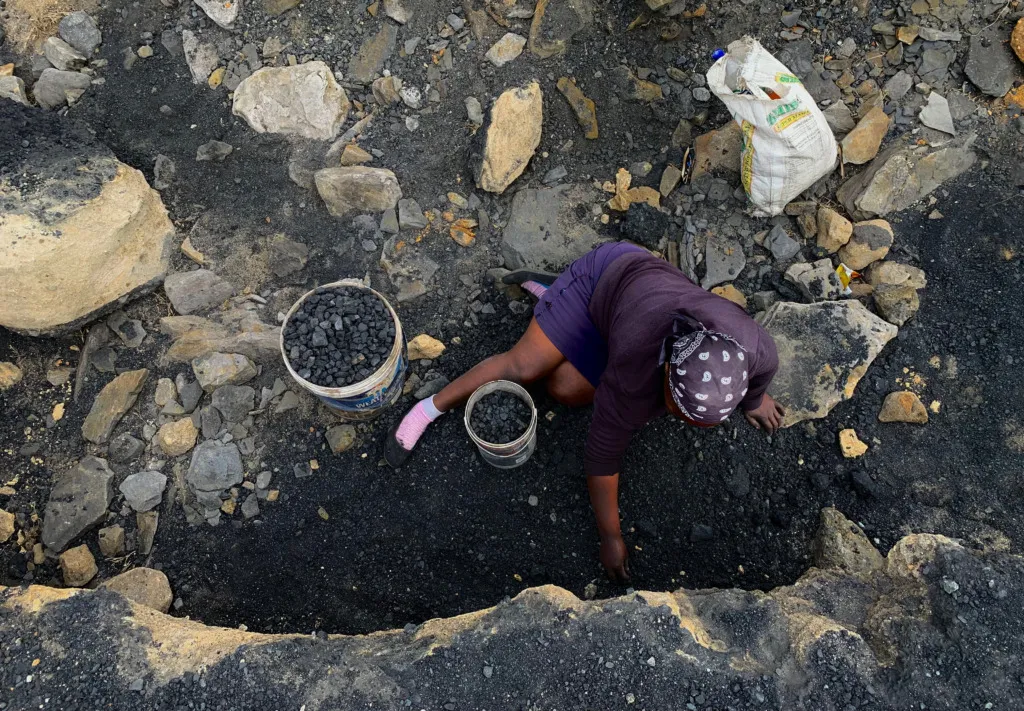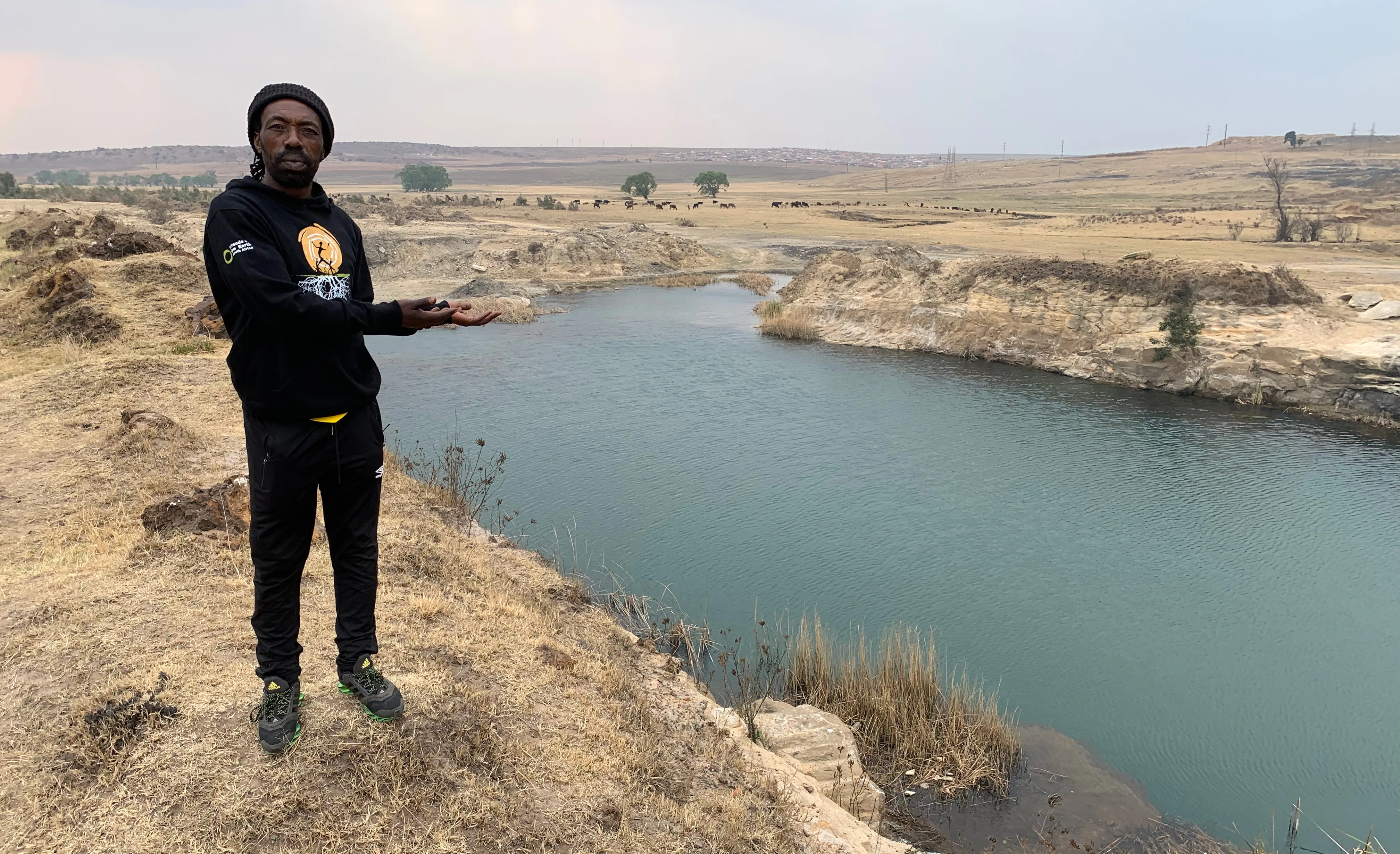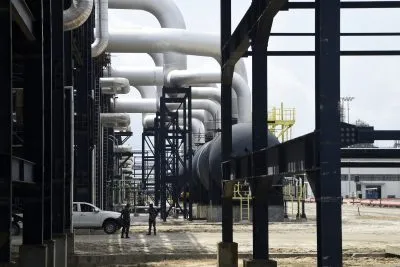Around a decade ago, the town of Carolina in South Africa’s Mpumalanga province faced the biggest disaster in its history.
In January 2012, heavy rainfall led to the collapse of the town’s water system. Scores of residents fell ill, and local authorities were slow to tell them the water was unsafe to drink. The Boesmanspruit Dam, which supplies drinking water to the town, was damaged by overflow acidified by coal mines in the area. The only places where clean water could be drunk in the town for the rest of the year were water tankers and mosques.
The water crisis sparked protests, and a High Court ruling later in 2012 directed the South African government to address the acid mine drainage crisis. After a sluggish response from Carolina’s municipality, the town’s water infrastructure was eventually cleaned. However, this did not address the problem at its root: instead, it only deferred it until the next time there was torrential rain.
A report by Human Rights Watch (HRW) released earlier this month, says not much has changed since the 2012 ruling. Community members still regularly report upset stomachs and other illnesses they believe are from contaminated water.
“The ongoing water crisis in Carolina underscores both the potential impacts of unchecked acid mine drainage but also the lack of government attention to these issues,” Vuyisile Ncube, Finberg fellow in the Environment and Human Rights Division at HRW, says. “Even when the government was directed by the court to address poor water quality it hasn’t done so. South Africa’s communities deserve better.”
Widespread issue
Carolina is among hundreds of communities in South Africa that are threatened by unmaintained coal mines. HRW reported that of roughly 6,000 abandoned coal mines in South Africa, at least 2,322 are classified as “high risk” to the public. But only 27 of these have been cleaned since 2009, South Africa’s auditor general reported in 2021.
High risk and uncleaned mines can cause accidents and the leeching of highly acidic water in a process known as acid mine drainage (AMD). AMD increases the risk of widespread soil and water acidity around the communities. It destroys the environment, leaves farmland unusable, corrodes municipal infrastructure and leaves water unsafe to drink.
AMD is a threat to South Africa’s already limited water resources and is costly to treat, especially if it is not addressed at an early stage. However, it is common for mining companies and local governments to neglect mines where AMD is rife.
The HRW report, which included data and interviews with affected residents, artisanal miners, health workers, and local officials, highlights Golfview mine and Imbabala Coal (Pty) mine, which are located in Ermelo, another town in Mpumalanga about 65km south of Carolina.
The Imbabala mine was abandoned by the company in 2011 after the Department of Mineral Resources and Energy (DMRE) found the mining business did not have the necessary license for water use.
Five years later, when the derelict mine had filled up with water, 17-year-old Xolani Mthembu and his 14-year-old friend, Sifiso Yende, drowned in the mine while swimming.

“That mine wasn’t rehabilitated and there isn’t even a warning sign, so the children saw [it as] a swimming pool,” Thomas Mthembu, Xolani’s uncle, says in the report. “The worst part is that my nephew [will not be] the last one. There are still children that will go there.”
After the accident, an official from the Msukaligwa local municipality, one of the authorities in Ermelo, promised the government would restrict access to the site. But the report claimed that its operations were completely accessible in 2021. African Business has contacted Msukaligwa municipality to comment.
South Africa has one of the world’s highest unemployment rates, which sits at 34.5%, leading many people to work abandoned mines as artisanal miners – individuals who mine but are not officially employed by any mining company. Artisanal miners are at higher risk in these mines as they have no protection or official health and safety standards to follow, putting them at risk from collapsing shafts, gas poisoning, suffocation and explosive accidents.
Between 2012 and 2015 there were reports of 312 artisanal mining deaths, at least 150 because of collapsing tunnels, gas poisoning, suffocation, and explosives accidents, according to a HRW analysis of local media reports.
Ncube tells African Business that artisanal mining continues to pose risks, and that has not been helped by the government not moving to regulate it. She demands that the DMRE releases funds to close and rehabilitate abandoned mines, so they don’t pose a danger to the public. She says this process could create employment opportunities.

Disappearing companies
When a company finishes mining, South African law stipulates that the business is supposed to apply to the DMRE for a closure certificate, Ncube says.
“They’re supposed to do an assessment and they’re supposed to go through a whole closure process that then releases funds so that the mining company uses those funds to rehabilitate, but what happens in practice is that by the time that end of life arrives and the company’s no longer profitable, the companies disappear.”
This happened with the Imbabala coal mine, as the company’s director “disappeared” and the entity was deregistered, meaning that the closure process wasn’t triggered.
“With Golfview and Imbabala Coal, these two mines are now in limbo, with the mining company owners not having taken up responsibility for closing and the DMRE not having triggered the closure process so that they can bear the responsibility to rehabilitate.”
She says that one of the main reasons for this is that the DMRE’s compliance monitoring and enforcement is “weak”.
Mining companies should “ensure annually that they continue reviewing the amount of money that they’ve set aside to ensure that by the time they reach the end of life, and the business is no longer profitable, that financial provision is sufficient to cover the cost of rehabilitation [and] environmental degradation,” she says.
Philani Mngomezulu, co-founder of the Ermelo-based Khuthala Environmental Care Group (pictured at top of page), says the Presidential Climate Commission, an independent statutory body to address climate change, must unlock funds to rehabilitate derelict mines.
“Mining companies have failed dismally to comply with the law for the past two centuries, that is why South Africa is left with burdens of ravaged and degraded land and environment. Some mines we have left burning underground for decades now,” Mngomezulu tells African Business.
He believes South Africa’s National Environmental Management Act and Mineral and Petroleum Resources Development Act have failed to protect vulnerable communities close to the mines.
A ‘just’ transition?
Mngomezulu says that more political pressure is needed to make sure mining companies are held accountable. South Africa’s planned “Just Transition” away from coal and other fossil fuels to renewable energy must include rehabilitation of the coal mines, as well as restoration and regeneration of the environment, he says.
South Africa is the continent’s largest coal user, but at Cop26 last November, the country received $8.5bn to help the country transition away from fossil fuels into green energy. Mngomezulu believes that the funds must provide sustainable job opportunities for South Africans, such as community members helping to turn former coal mines into sports stadiums, ecovillages and solar farms.
“These mines cause deaths to our communities and dispossession of our land. They impact our health negatively, degrade the environment and negatively impact our biodiversity. They cause contamination. But the major issue is that we’re losing innocent children and community members.”
Ncube adds: “We would like to see communities that have been at the forefront of poor [mineral] extraction being prioritised in the just transition.”
“You can’t have community members that were burdened by the extraction of coal now having to clean up a mess that’s not that wasn’t caused by them.”
African Business has contacted Carolina’s municipality government and South Africa’s Department of Mineral Resources for comment.
Want to continue reading? Subscribe today.
You've read all your free articles for this month! Subscribe now to enjoy full access to our content.
Digital Monthly
£8.00 / month
Receive full unlimited access to our articles, opinions, podcasts and more.
Digital Yearly
£70.00 / year
Our best value offer - save £26 and gain access to all of our digital content for an entire year!
 Sign in with Google
Sign in with Google 



